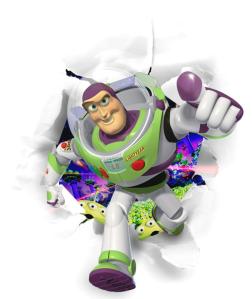 I’ve been trying to make sense of the draft of the K12 common core state standards for math. These are different from the National Council of Teachers of Mathematics (NCTM)’s standards. Trying to line up what children should be able to do based simply on the grade they are in is not realistic. Staying close within the age range of the children I teach, I found it interesting that for Grade 1, they include “Tell time from analog clocks in hours and half- or quarter-hours,” yet there is no mention of introducing or teaching fractions until the Grade 3 standards. Then for Money, the Grade 2 standard reads, “Solve word problems involving dollar bills, quarters, dimes, nickels and pennies. Do not include dollars and cents in the same problem. So I suppose asking a kid to add $1.50 and $1.50 is something I shouldn’t do? There’s no mention of learning about money again on these standards. Hmmm?
I’ve been trying to make sense of the draft of the K12 common core state standards for math. These are different from the National Council of Teachers of Mathematics (NCTM)’s standards. Trying to line up what children should be able to do based simply on the grade they are in is not realistic. Staying close within the age range of the children I teach, I found it interesting that for Grade 1, they include “Tell time from analog clocks in hours and half- or quarter-hours,” yet there is no mention of introducing or teaching fractions until the Grade 3 standards. Then for Money, the Grade 2 standard reads, “Solve word problems involving dollar bills, quarters, dimes, nickels and pennies. Do not include dollars and cents in the same problem. So I suppose asking a kid to add $1.50 and $1.50 is something I shouldn’t do? There’s no mention of learning about money again on these standards. Hmmm?
Math is a cumulative subject, but it isn’t linear, and like all things we learn, the more we use it, the more internalized it becomes leading us to be able to construct new concepts. While the standards and scope and sequence of most standards in math are linear, math itself is not. The subject of time involves many skills and for a second grader who doesn’t know how to read time on an analog clock, learning what skill or underlying concept is keeping them from moving forward.
Reading a dial is one skill.
Knowing that there are two separate dials (one divided into 60 parts and the other into 12) is another.
The one dial affects how the other dial moves.
The passage of time is another concept kids need to learn. How long is 5 minutes? Using and hour glass is a great visual for kids.
They need to be able to understand half and quarter of a circle and what that looks like.
They need to be able to count by fives as many clock faces don’t number the minutes.
AM and PM (many kids associate one with night and the other with day).
Time is not something that should be introduced in chapter 5, taught intensly for 2 weeks, assessed, and then done with. Kids should be asked to tell time out of necessity.
Student: Is it recess time yet?
Teacher: You tell me. There’s a clock over there.
The way your student responds can tell you a lot.
And for the children who already know how to tell time on an analog clock. Start preparing them for the problem that begins: A train left the station in New York at 3:30 PM …
Curricular standards (and how they are assessed) have been argued for decades. And they continue to be debated. Free creative commons digital textbooks, where students get to customize their own subject content and download it, are just starting. CK-12 is a good example (still mostly high school content).






 Many continue to criticize how we assess our students like AP tests.
Many continue to criticize how we assess our students like AP tests. 


